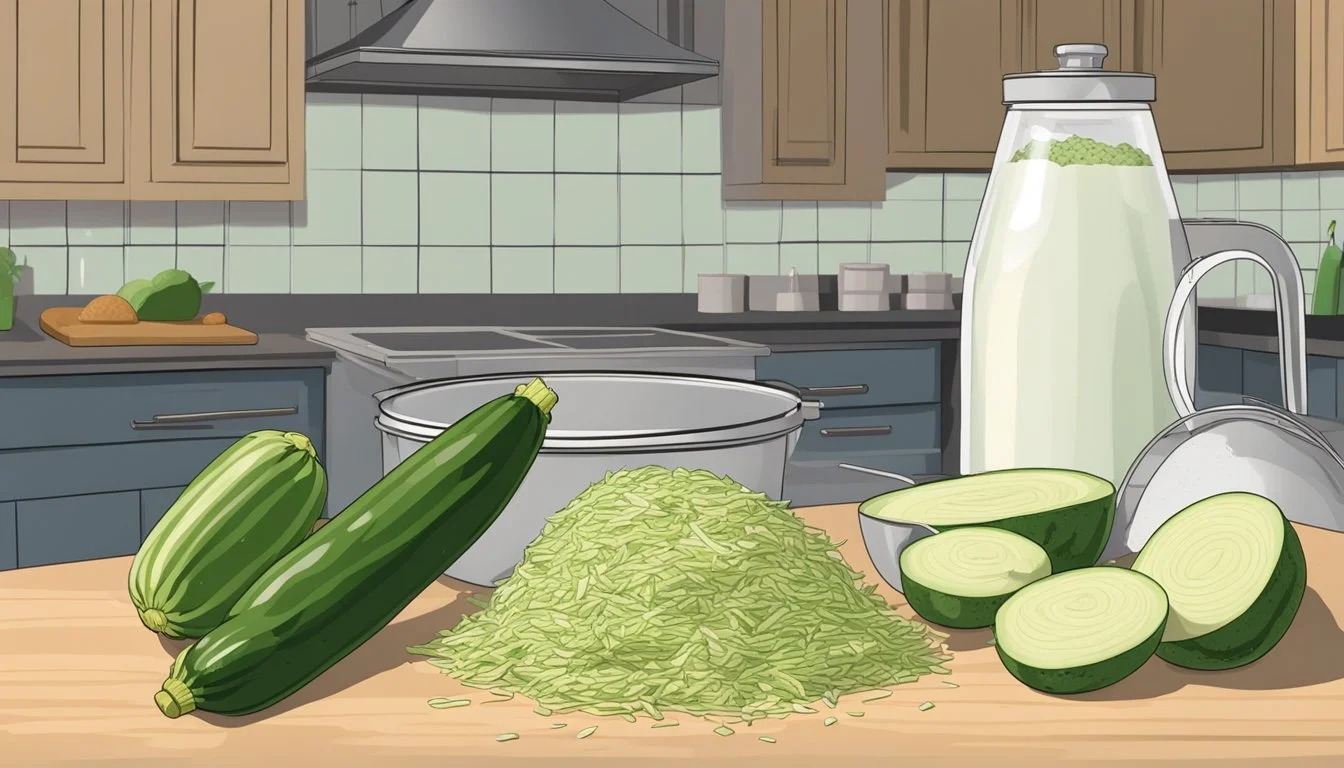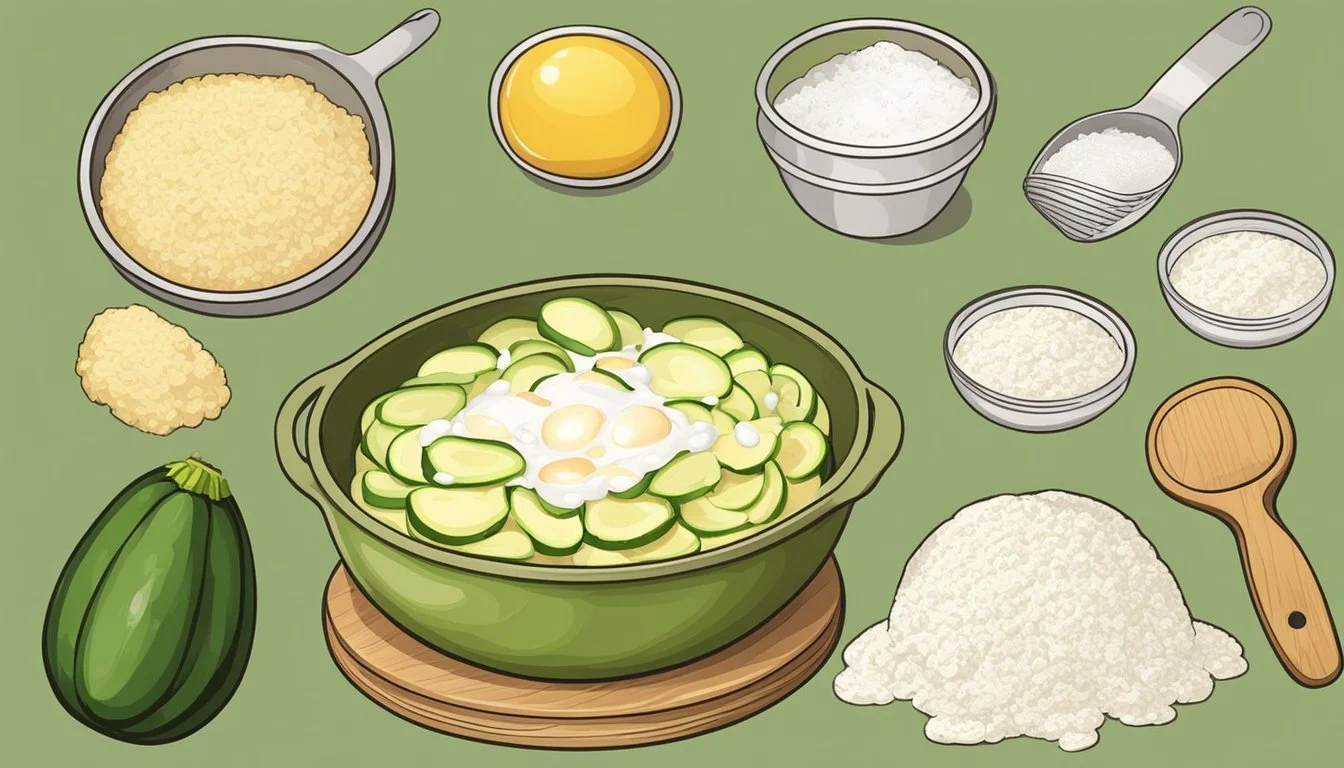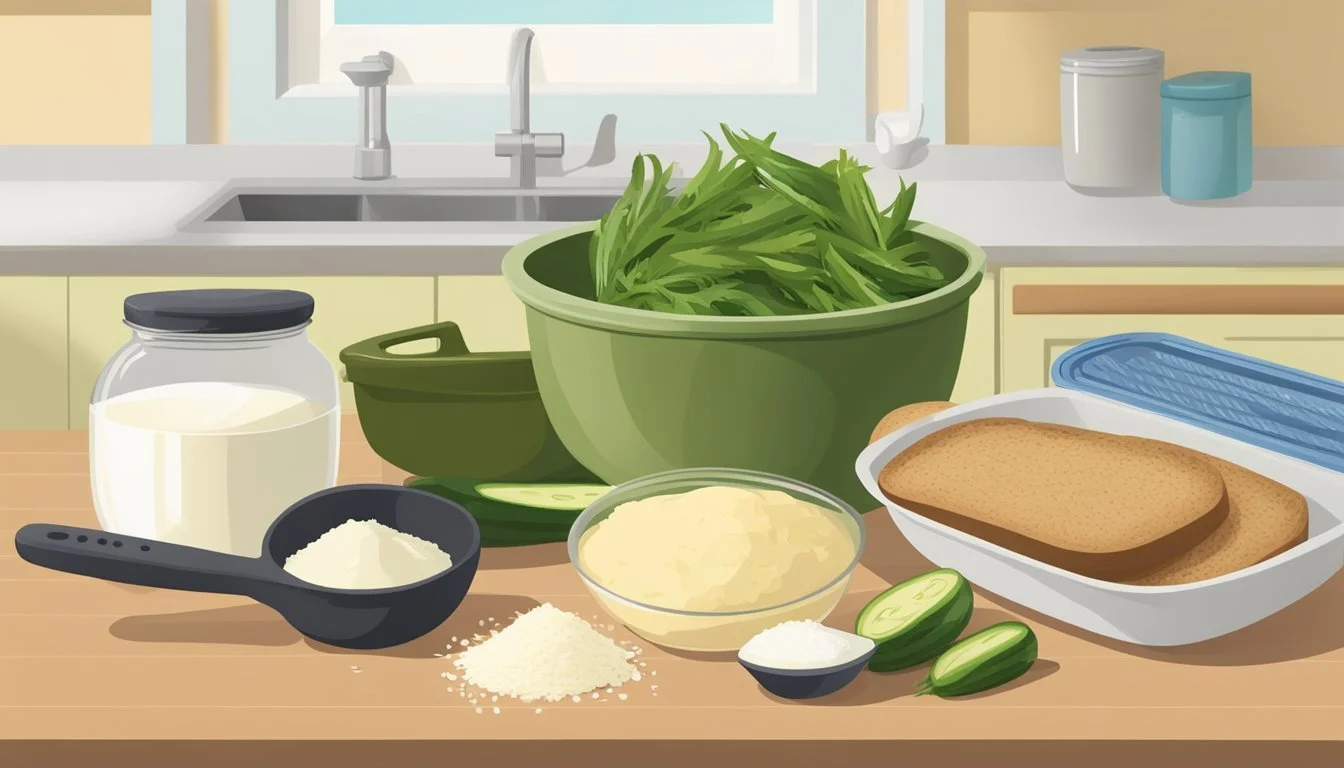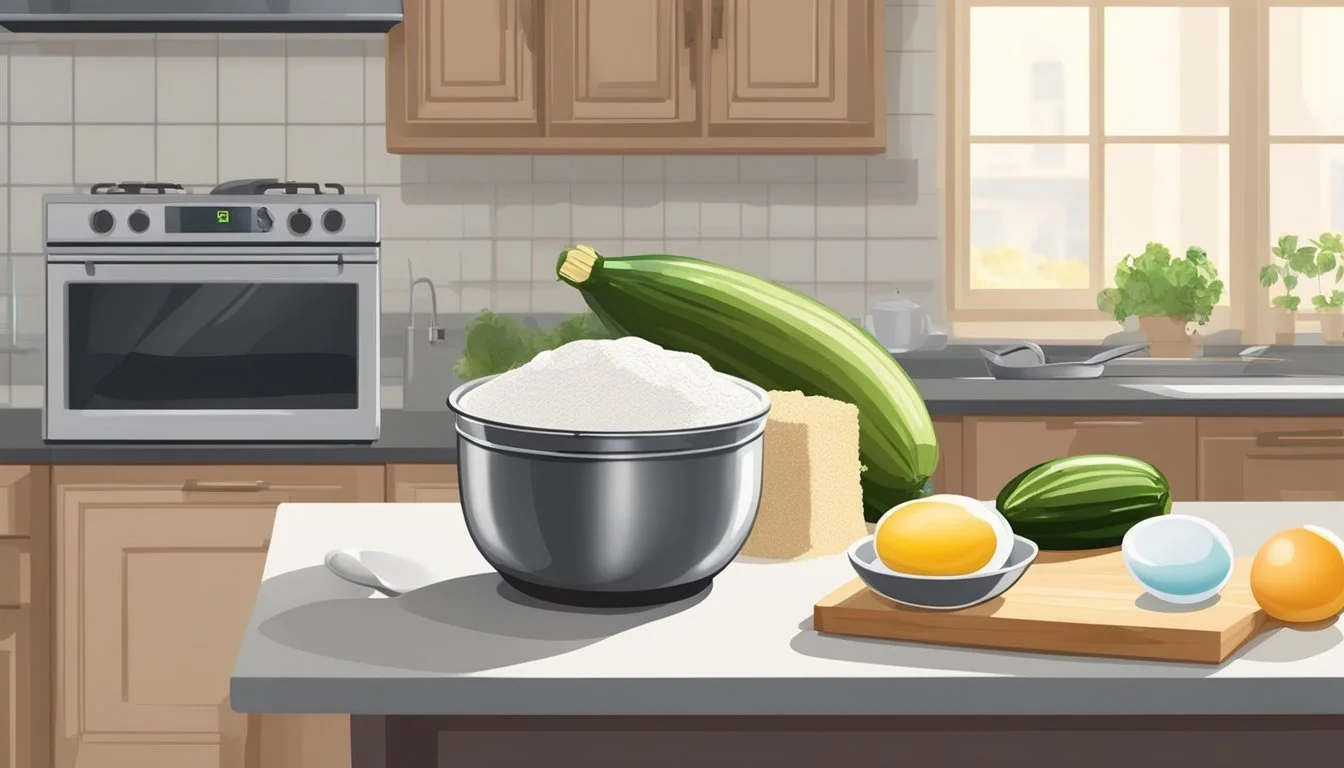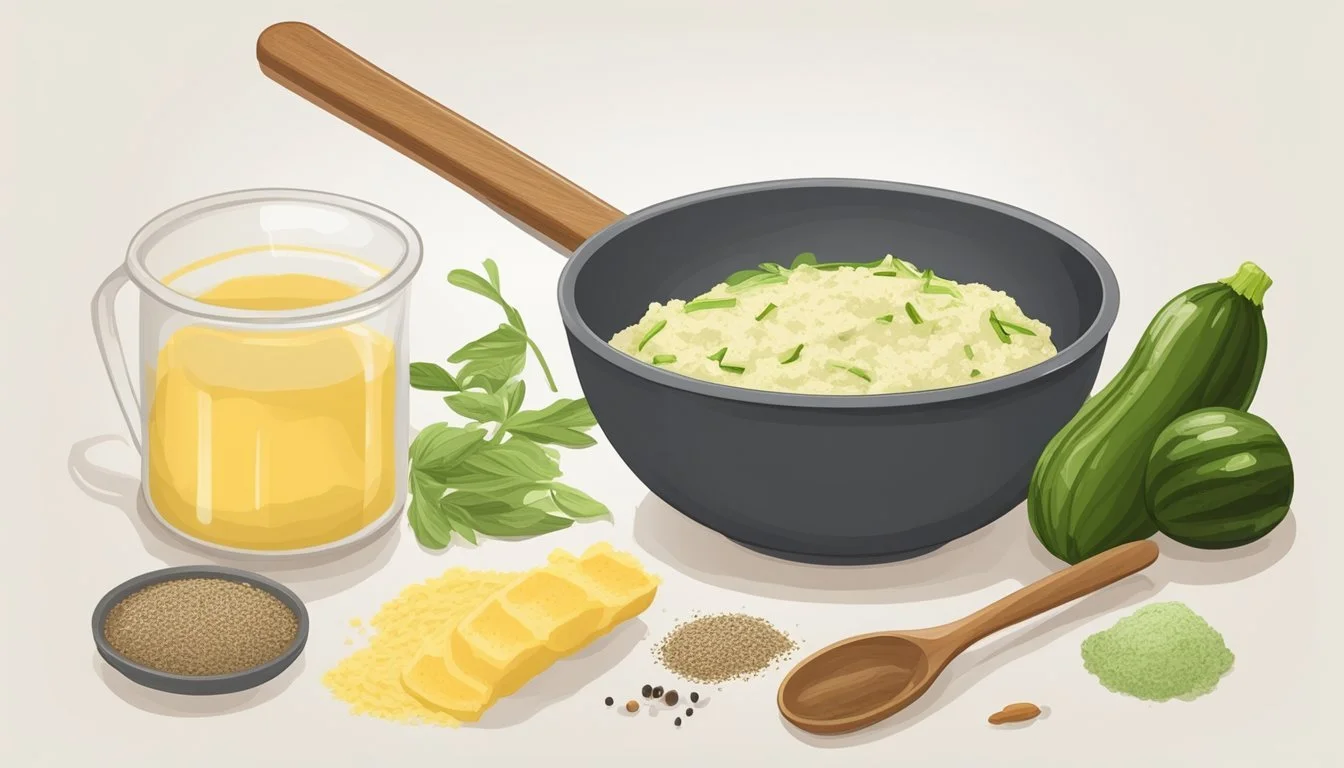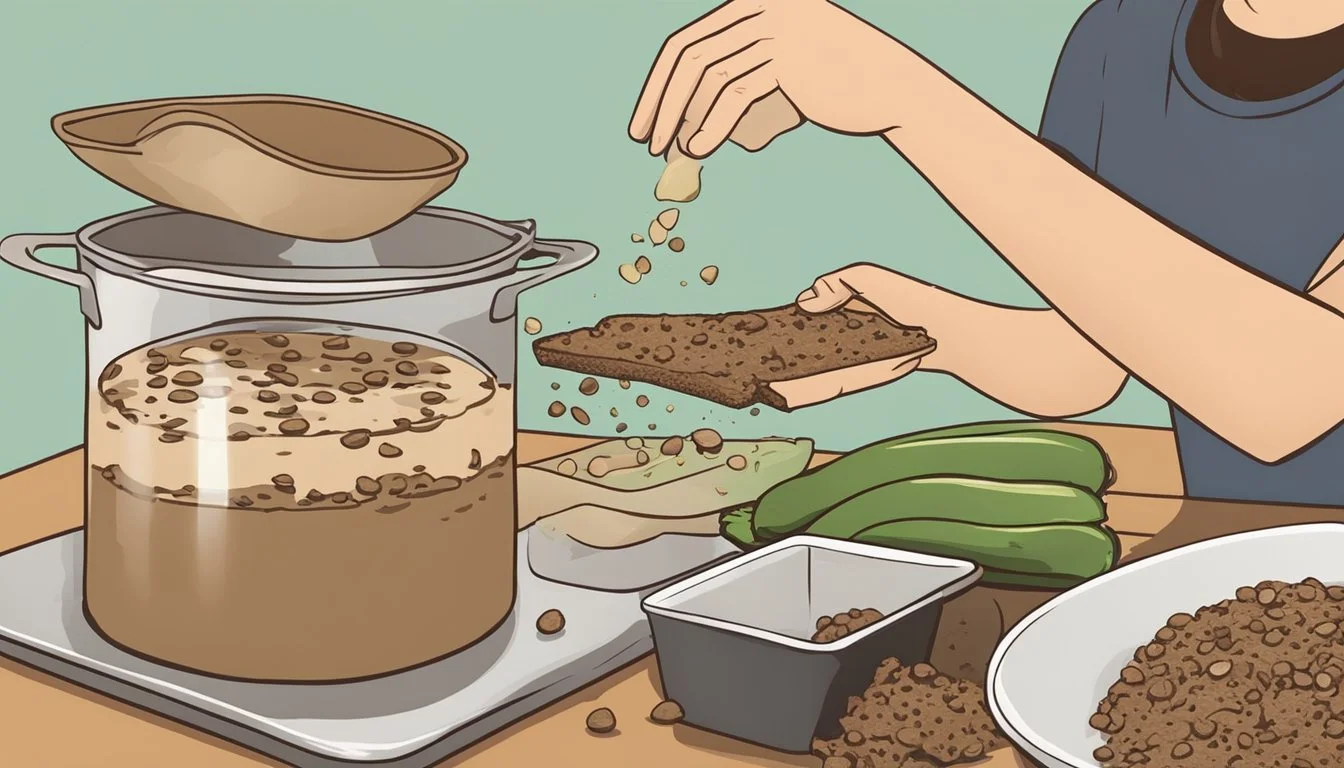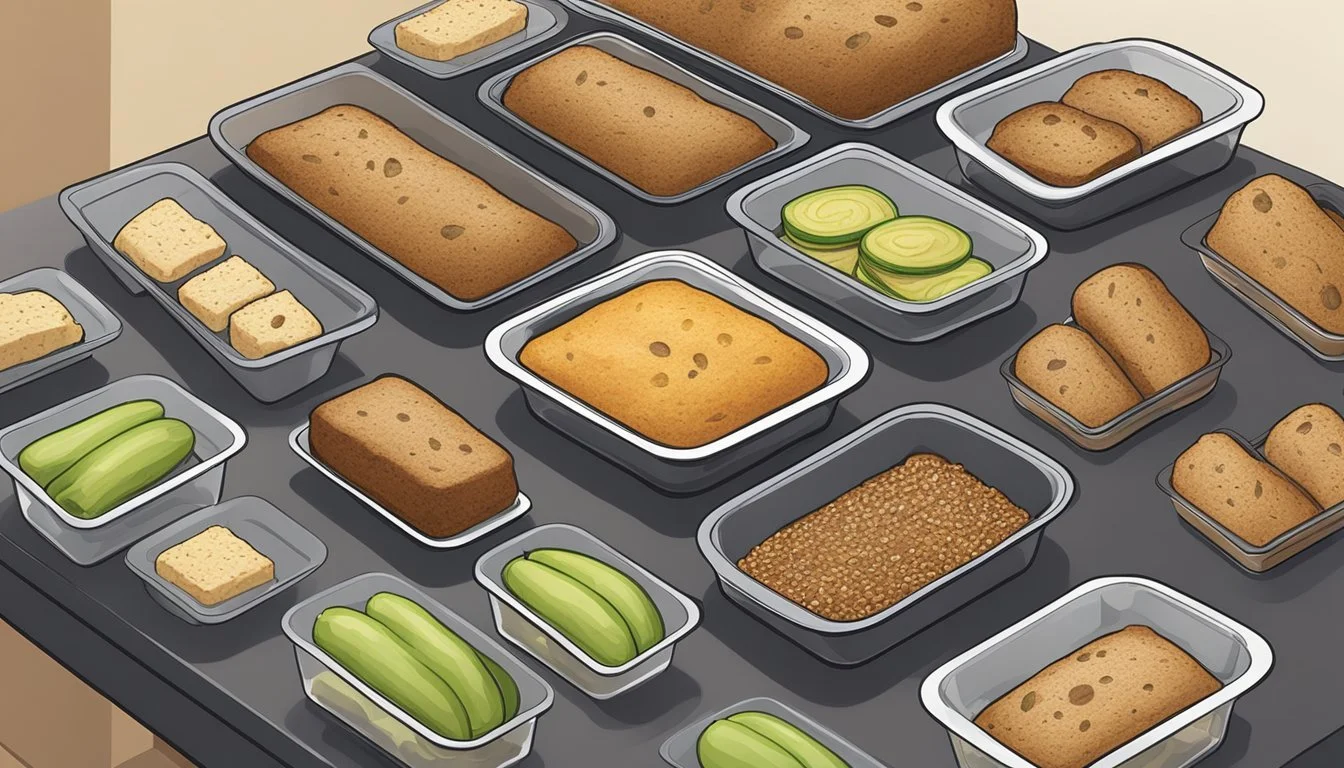Zucchini Bread Substitutes
Alternative Ingredients for Your Favorite Loaf
Zucchini bread is a beloved treat that blends the moist, tender qualities of quick breads with the subtle, fresh flavors of zucchini. This garden vegetable is not only a nutritious addition but also provides a unique texture and moisture to the bread. However, when zucchini is not in season or if someone has dietary restrictions, finding a suitable substitute becomes necessary. Fortunately, there are several alternatives that can maintain the delightful qualities of the original recipe while offering their own distinct advantages.
For bakers and cooks looking to reproduce the texture and consistency of zucchini bread, options like squash, applesauce, and bananas come to the rescue. Yellow squash can mimic zucchini's role due to its similar moisture content and texture. Meanwhile, applesauce serves as a great way to keep the bread moist without adding fat, making it a healthier option that does not compromise on the softness of the bake. Additionally, bananas can offer a naturally sweet flavor while maintaining the bread's moistness. Each substitute provides opportunities for bakers to get creative with the recipe and tailor it to dietary needs or personal preferences, whether due to a lack of ingredients or a desire to explore new flavors.
Understanding Zucchini Bread
Zucchini bread is a popular quick bread that elegantly incorporates the mild flavor and moistness of zucchini into a sweet, cake-like loaf. This section delves into the unique characteristics of zucchini in the bread-making process and the health advantages it offers.
The Role of Zucchini in Bread
Zucchini serves as a key ingredient in zucchini bread, contributing significantly to the bread's texture and moisture. The vegetable's high water content helps create a loaf that is moist and tender. When grated and added to the bread dough, zucchini seamlessly blends with the other ingredients without overpowering them, making the bread not only delectable but also visually appealing with little specks of green.
Important attributes of zucchini in bread include:
Moisture: Enhances the bread's tenderness.
Texture: Offers a delicate crumb.
Taste: Provides a subtle, slightly sweet flavor.
Health Benefits of Zucchini Bread
Zucchini bread can be a nutritious addition to one's diet when prepared with health-conscious ingredients. Zucchini itself is a low-calorie vegetable that is rich in vitamin C, vitamin A, potassium, and dietary fiber, essential for digestive health.
The benefits of including zucchini in bread revolve around:
Dietary Fiber: Aims to aid in digestion and promote a feeling of fullness.
Nutrients: Zucchini is packed with essential vitamins and minerals.
By incorporating whole grain flours, reducing sugars, or using alternative sweeteners, one can enhance the nutrient profile of zucchini bread, making it a healthier option that doesn't compromise on taste.
Common Substitutes and Their Properties
When baking zucchini bread, a range of substitutes can be used to replicate the moisture and flavor of zucchini or to replace other key ingredients. The following sections detail specific substitutes, their unique properties, and how they can best be incorporated into zucchini bread recipes.
Fruit-Based Substitutes
Applesauce: Applesauce can serve as a fat substitute, providing moisture without the additional oils. Using unsweetened applesauce is preferable to avoid altering the intended sweetness of the bread. One can substitute oil with an equal amount of applesauce in recipes.
Bananas: Mashed bananas bring both moisture and a natural sweetness to zucchini bread, allowing for reduced added sugars. Bananas are also a great egg substitute, providing binding properties. To replace one egg, one can use half a banana.
Vegetable Alternatives
Sweet Potato: Sweet potatoes, when cooked and mashed, offer a creamy texture and a sweet, earthy flavor similar to zucchini. Rich in nutrients, they can be substituted in equal measure for zucchini in recipes.
Pumpkin: Similar to sweet potatoes, pumpkin puree can add moisture and a seasonal flavor. It can also replace fats such as oil or butter. Use pumpkin puree in a one-to-one ratio to replace the amount of zucchini called for in the recipe.
Protein-Rich Substitutions
Flaxseed Meal: Ground flaxseeds mixed with water create a gelatinous mixture that can substitute for eggs. A common ratio is one tablespoon of flaxseed meal with three tablespoons of water to replace one egg, imparting a nutty flavor and added nutrients.
Greek Yogurt: Greek yogurt is a protein-rich substitute that can add creaminess and a tangy flavor while reducing the fat content by replacing oils. It's typically used in a one-to-one ratio for oil or butter.
By understanding the properties of these substitutes, bakers can successfully create delicious, moist, and flavorful zucchini bread, accommodating dietary preferences and using ingredients they have on hand.
Special Diet Adaptations
When baking zucchini bread, one can easily adapt recipes to suit vegan and gluten-free diets without sacrificing flavor or texture.
Vegan Zucchini Bread Substitutes
For those on a vegan diet, traditional egg and dairy ingredients need replacing. Vegan butter is a direct substitute for butter. Commercial egg replacers, available in health food stores, provide the binding needed for the bread structure. Alternatively, a mixture of vinegar and baking soda can be used; one teaspoon of baking soda mixed with one tablespoon of vinegar can replace one egg. This combination creates a chemical reaction that adds leavening to the bread. However, this should be used when the recipe calls for a minimal number of eggs to prevent a vinegar taste.
Gluten-Free Alternatives
Individuals with gluten sensitivities can opt for gluten-free flour blends, which are specially formulated to mimic the texture of wheat flour. These blends often include a mix of rice flour, potato starch, and xanthan gum for structure. One should look for gluten-free labels to ensure no cross-contamination with gluten-containing products. It's crucial to stick to the recommended flour substitutes as gluten-free baking is precise and substitutions can dramatically alter the outcome.
Baking Ingredients and Their Functions
When creating zucchini bread, understanding the role of each baking ingredient ensures a successful bake. Elements such as leavening agents, binding materials, and flavor enhancers contribute to the final taste, texture, and structure of the bread.
Leavening Agents
Leavening agents are essential for adding lightness and volume to zucchini bread. The most common agents include:
Baking Soda: A basic compound that reacts with acidic components to produce carbon dioxide gas, which helps the bread rise.
Baking Powder: Contains baking soda and an acidifying agent, requiring only moisture to trigger a reaction, which lifts the dough as it bakes.
Binding Materials
Binding materials hold the ingredients together and provide structure:
Eggs: They serve as a powerful binder, offering moisture and helping to create a stable emulsion of ingredients.
Flour: It is the primary structural component, with gluten development being critical for achieving the desired crumb in bread.
Enhancing Flavors and Textures
Flavor and texture can be modified using various ingredients:
Oil: Serving as a fat source, it adds moisture and can lead to a tender crumb. Suitable substitutes include canola oil, sunflower oil, and applesauce.
Sugar: While providing sweetness, sugar also retains moisture, contributing to a softer texture.
Salt: Used sparingly, it enhances the overall flavor profile and controls yeast fermentation.
Each ingredient plays a specific role that contributes decisively to the overall sensory experience of zucchini bread.
Preparation Techniques
When making zucchini bread, precise preparation techniques can make the difference between a good loaf and a great one. Attention to detail in measuring ingredients, mixing batter, and controlling baking times is crucial.
Proper Measurement and Mixing
The first step in preparing zucchini bread is to measure ingredients accurately. Use standard measuring cups and spoons, and level off dry ingredients to ensure consistency. When it comes to zucchini, it should be grated finely before being added to the mix. No need to peel the zucchini, as the skin adds additional nutrients and color to the bread.
Once all components are ready, follow the recipe's order of combining them. Typically, dry ingredients are sifted or whisked together separately from wet ingredients. They are then combined with a gentle folding motion to avoid overworking the batter. Overmixing can activate the gluten in the flour too much and result in a denser bread.
Baking and Cooling
Preheat the oven to the temperature specified in the recipe, usually around 350°F. It's important that the oven reaches the correct temperature to ensure even baking. While waiting, grease the loaf pan or line it with parchment paper for easy removal after baking.
Pour the batter into the prepared pan and smooth the top with a spatula. Insert it into the oven and bake according to the recipe's instruction—usually for around 50-60 minutes. A toothpick inserted in the center should come out clean when the bread is done.
After baking, allow the zucchini bread to cool in the pan for about 10 minutes. Then, transfer it to a wire rack to cool completely. Cooling on a wire rack prevents the bottom from becoming soggy and promotes even air circulation. Cutting into the bread before it is cooled may result in a crumbly texture.
Customizing Zucchini Bread
Customizing zucchini bread involves adding a variety of flavors and textures that enhance the classic recipe. Whether one favors a crunch from nuts or a sweetness from natural sugars, these additions ensure each loaf can cater to individual preferences.
Incorporating Nuts and Seeds
To add a satisfying crunch and nutritional value to zucchini bread, one can incorporate nuts and seeds. Walnuts are a classic choice, offering a rich, nutty flavor and heart-healthy fats. They can be roughly chopped and folded into the batter. For a different twist, sunflower seeds or pumpkin seeds provide a subtle crunch without overwhelming the bread's texture.
Using Sweeteners
Natural sweeteners not only infuse zucchini bread with rich flavors but also add moisture. Honey is an excellent choice for a touch of natural sweetness and can be used in place of processed sugars. Alternatively, one might opt for brown sugar, delivering a deeper, caramel-like flavor profile. Dates offer a dual role, acting both as a sweetener and a moist texture enhancer when pureed and mixed into the batter.
Adding Spices
Spices elevate the aromatic quality of zucchini bread significantly. Cinnamon is fundamental for its warm and spicy note, while nutmeg introduces an earthy sweetness that complements the zucchini's mild flavor. These spices can be adjusted according to taste, but a consensus remains that they are integral to achieving the signature zucchini bread aroma and taste.
Creating Unique Variations
The versatility of zucchini bread allows for numerous unique variations. One can experiment by adding chocolate chips for a rich, decadent flavor that contrasts with the earthiness of zucchini. Incorporating raisins also offers bursts of natural sweetness with each bite. For a different take, infusing the dough with vanilla extract ties together the flavors with its creamy, floral notes, creating a harmonious balance with the zucchini base.
Serving and Storage
Proper serving and storage techniques ensure the zucchini bread retains its taste and texture, whether it's enjoyed as a breakfast treat, a snack, or dessert.
Recommended Serving Ideas
Breakfast: Serve a slice of zucchini bread as a quick breakfast option. To enhance its flavor and add richness, one can toast the bread lightly and spread a thin layer of cream cheese or butter on top.
Snack: For a healthy afternoon snack, zucchini bread provides subtle sweetness and a moist texture that pairs well with a cup of tea or coffee.
Dessert: Elevate it to a dessert by warming it up and serving it with a scoop of vanilla ice cream or a dollop of whipped cream.
Tips for Storing Zucchini Bread
Room Temperature: Store zucchini bread in an airtight container for up to 2 days, which helps retain its moisture without the risk of molding that is common in more humid environments.
Refrigerate for Longevity: When kept in the refrigerator, wrapped tightly in plastic wrap or in an airtight container, the bread can last up to 1 week, ensuring it stays moist and fresh.
Freezing Instructions:
Cool the bread completely before freezing.
Wrap the loaf or individual slices in plastic wrap, followed by a layer of aluminum foil.
Label with the date and freeze for up to 3 months.
Thaw at room temperature or in the microwave when ready to eat.
The use of a loaf pan for baking zucchini bread is standard as it helps to distribute heat evenly, allowing the bread to cook through while maintaining moisture.

